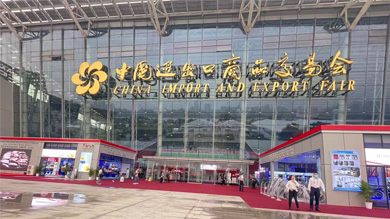ਦਸੰ. . 15, 2024 21:42 Back to list
Air Pressure Safety Valve for Enhanced System Performance and Reliability
Understanding Air Pressure Release Valves
Air pressure release valves, commonly known as pressure relief valves, are critical components in various industrial systems, safety equipment, and appliances. These devices are designed to release excess pressure from a system to prevent over-pressurization, which can lead to catastrophic failures, including explosions or other dangerous outcomes. This article explores the workings, importance, and applications of air pressure release valves.
How Air Pressure Release Valves Work
Air pressure release valves operate based on a straightforward principle they open at a predetermined pressure level, allowing excess air or gas to escape. The basic design of a pressure relief valve includes a spring-loaded mechanism that holds a sealing element against a seat. As pressure builds up in the system and reaches the set point, the force exerted by the air pressure exceeds the resistance of the spring. This causes the valve to open, releasing the excess pressure until the system stabilizes below the set point. Once the pressure drops sufficiently, the valve closes again, ensuring that the system remains safe and functional.
Importance of Pressure Relief Valves
The role of air pressure release valves cannot be overstated. They are essential for ensuring the safe operation of numerous applications, including
1. Industrial Equipment In manufacturing and processing plants, equipment often operates under high pressure. Pressure relief valves safeguard against the risks associated with unexpected pressure spikes, thereby protecting both the equipment and the personnel working nearby.
2. HVAC Systems Heating, ventilation, and air conditioning (HVAC) systems frequently utilize pressure relief valves to maintain safe pressure levels within ducts and pipelines. This prevents potential leaks or system failures that could disrupt climate control and air quality.
3. Medical Devices In the medical field, pressure relief valves are critical for devices like oxygen tanks and anesthesia machines. They ensure that the internal pressure does not exceed safe levels, safeguarding both patients and healthcare providers.
4. Aerospace An essential aspect of aerospace engineering, pressure relief systems help manage the pressure in aircraft cabins and fuel systems. The reliability of these valves is paramount to ensure passenger safety and system integrity during flight.
air pressure release valve

5. Automotive Applications In cars, pressure relief valves are used in various systems, including fuel systems and cooling systems. They help manage pressure variations that can occur during operation, contributing to overall vehicle reliability.
Types of Air Pressure Release Valves
There are several types of air pressure release valves, each suited for different applications and requirements
- Spring-Loaded Valves These are the most common type. They use a spring to hold the sealing element in place and open it when the pressure exceeds a specified limit.
- Pilot-Operated Valves These valves use a pilot system to sense pressure and control the main valve opening. They can handle higher pressures and provide better sealing under normal operating conditions.
- Vacuum Relief Valves These valves are designed to release air into a system when a vacuum is created, preventing damage to tanks or pipes.
- Electronic Pressure Relief Valves Innovations in technology have led to the development of electronically controlled pressure relief valves that can automatically adjust to varying pressure levels, providing enhanced safety and efficiency.
Conclusion
Air pressure release valves are indispensable for maintaining safety and operational efficiency across a broad range of industries. Their ability to manage excess pressure and prevent equipment failure makes them vital components in manufacturing, HVAC, medical devices, aerospace, and automotive sectors. Regular maintenance and testing of these valves are crucial in ensuring their reliable performance over time. As technology advances, we can expect even more innovative solutions to further enhance safety and efficiency in pressure management systems. Understanding and implementing quality air pressure release valves is an essential step in safeguarding not just equipment, but also lives.
Share
-
Reliable Wafer Type Butterfly Valves for Every IndustryNewsJul.25,2025
-
Reliable Flow Control Begins with the Right Ball Check ValveNewsJul.25,2025
-
Precision Flow Control Starts with Quality ValvesNewsJul.25,2025
-
Industrial Flow Control ReliabilityNewsJul.25,2025
-
Engineered for Efficiency Gate Valves That Power Industrial PerformanceNewsJul.25,2025
-
Empowering Infrastructure Through Quality ManufacturingNewsJul.25,2025